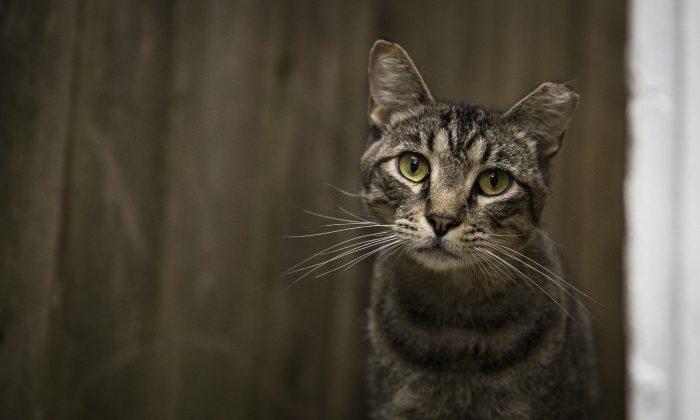In his book, “The Soul of Autism,” author Bill Stillman provides dozens of examples of people with an Autism Spectrum Disorder (ASD) who have had a spiritual, psychical, or anomalous experience—call it what you will. Stillman, who himself has Asperger’s Syndrome, writes about these perceptions with a firsthand knowledge. Another author with an ASD, Donna Williams, has recounted her own psychic experiences, connecting them with sensory sensitivity and thin boundaries. Even among savants—who make up about 10 percent of the percentage of people with ASD—anomalous perceptions are not unknown. A large-scale study of child savants in the 1970s turned up a few whose parents reported that their son or daughter had extrasensory perception; a more recent cataloging by savant expert Dr. Darold Treffert indicates a similar smattering of cases.
I suspect that such accounts reflect a genuine difference in sensory processing—and, consequently, a different sense of self.
Accumulating evidence suggests that people with an ASD (or, for that matter, a Sensory Processing Disorder or SPD) are, from an early age, bombarded by sensory input that they have trouble discriminating. Their boundaries, we might say, are thinner than those of other people for whom the distinction between “outer” and “inner” is more constant, more firm. But even among individuals living with such a condition, there is a spectrum between high functioning and low functioning forms. People with high functioning forms of ASD or SPD will have somewhat thicker boundaries and a more fully delineated conception of self. People with low functioning forms will be more likely to withdraw into their own world, dissociate from feelings and sensations that become overwhelming, and become less engaged and communicative.
As I have proposed elsewhere (for a fuller accounting, see my book “The Spiritual Anatomy of Emotion”), thin boundary people are most likely to report anomalous perceptions whereas thick boundary people are more likely to engender anomalies.
Perhaps the most outstanding illustration of the latter is Matthew Manning, a 58-year-old Brit who, at the age of 11, began to find himself at the center of a series of increasingly powerful poltergeist displays. They began with the “mere” unaccounted-for movement of a silver tankard and flowerpot and then, when he was 15 and living in a much older (18th century) house in Cambridgeshire, escalating to furniture lifting off the ground and household objects variously levitating or hurtling through the air.
Even more bizarre, the signatures of dead people—several hundred of them, all in different hands—began to appear, roughly scrawled, on Manning’s bedroom wall. The first was signed by one Robert Webbe, a 17th-century figure who left a message that indicated, as Manning puts it in an interview with GQ, that he “seemed to have no idea that he was dead.” On one occasion, witnessed by observers, Manning’s father ushered the whole family into the garden, with his son’s bedroom roped off, leaving a pencil on the bed. When they returned after ten minutes, another inscription had been added. Some of the names, which were systematically photographed, appear in historic parish registers; others were of unknown provenance.
The story becomes stranger still. The family moved to another house, whereupon, in his brother Andrew’s words, the poltergeist “just erupted, like a volcano under the house. When it got very bad I went to sleep in my sister’s bedroom. The house had no carpet because we had just moved, and that made it all the noisier—bangings, crashings, thumpings. We had no explanation. We just hoped it would stop.” When Matthew was sent away to school, his parents and siblings experienced “a tidal wave of relief that he had left,” wrote GQ’s Richard Chalmers. But the boarding school then suffered through a similar predicament. One of Manning’s former classmates recalls:
“There were 24 of us in bunk beds. Things just started to happen. Water appeared from nowhere. I remember my bed moving when there was nobody near it. On one occasion, this pile of dinner plates came crashing down, out of thin air, and shattered on the floor. Where they came from, who knows? Matthew was frightened. I was bloody terrified. It was the sort of experience that, unless you’ve been through it, you can’t begin to comprehend.”
The tale takes one further turn. While working on an essay, Matthew found that his hand began to produce writing that was not his. This took him quite aback at first. But then, after producing a long composition, he noticed that the poltergeist activity ceased for about 24 hours. So he deliberately tried the strange exercise again. “A lot of what came through,” he recalls, “was nonsense; other things purported to be messages from people who had died … I had always imagined that the automatic writing, whatever it was, was probably flotsam that was coming out of my unconscious … But when I began writing in Chinese and Arabic … well, that did freak me out a bit. Because those languages were not, so far as I was aware, present in my subconscious.”
Nor was Matthew any kind of artist. Upon being prompted by his mother to “channel” artwork, though, he produced a number of pictures reminiscent of artists ranging from Albrecht Dürer (a 16th century painter and printmaker) and Aubrey Beardsley (a 19thcentury author/illustrator) to Pablo Picasso. The drawings “seemed to be a striking mimicry … even though flawed in some technical detail, their style and execution faithfully mirrored the original model,” explained Jan Ehrenwald, in “The ESP Experience: A Psychiatric Validation.” This remarkable capacity is exactly what distinguishes savants—but Matthew is not obviously impaired and is, in fact, quite at home as a conversationalist. So does Matthew have any touch of autism?
It’s hard to say but he might have had a more pronounced form of autism as a child. Matthew is recalled by psychologist Peter Bander as, “an introvert who ... absolutely refused to talk to strangers. When scolded for mischievousness, he would withdraw into a corner and remain there, sometimes for hours, curled up in total isolation.” Some years later, the headmaster of his boarding school described him as “a loner and rather lethargic.” Manning might well have grown out of this inwardness given the many interviews and public appearances he undertook in his late teens and twenties.
When we consider what could possibly produce someone like Matthew Manning, it’s significant that, three weeks before he was born, his mother suffered such a severe electrical shock that she feared she might lose him. This reinforces a point I have previously argued, that challenges to normal development in the womb may be the surest precursor of the conditions we’ve looked at—whether synesthesia, autism, savantism, prodigiousness, environmental sensitivity, or the attunement to/generation of anomalous experiences.
Michael Jawer has been investigating the mind-body basis of personality and health for the past 15 years. His articles and papers have appeared in Spirituality & Health, Explore: The Journal of Journal of Science and Healing, Noetic Now, and Science & Consciousness Review. Jawer has spoken before the American Psychological Association and been interviewed by multiple publications. His latest book, written with Marc Micozzi, MD, Ph.D., is “Your Emotional Type.” Its website is www.youremotionaltype.com. His previous book is titled “The Spiritual Anatomy of Emotion,” its website is www.emotiongateway.com. Jawer can be reached at [email protected].
This article was originally published by Psychology Today.
Visit the Epoch Times Beyond Science page on Facebook and subscribe to the Beyond Science newsletter to continue exploring ancient mysteries and the new frontiers of science!
*Images of a little girl and of floating dishes via Shutterstock





Friends Read Free